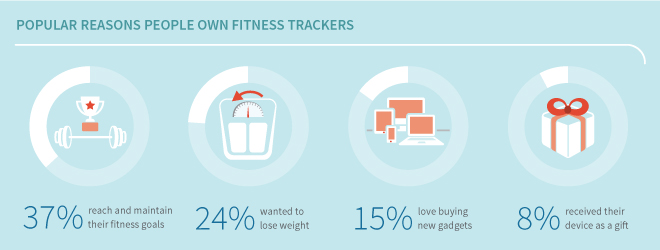The Future of Fitness Wearables is a Wide Open Road
The Model-T was the world’s first affordable automobile and widely believed to be the most influential car of the 20th century. Built by Henry Ford in 1908, the Model-T was the first mass-produced automobile built on a moving assembly line. By designing a car with interchangeable parts, Ford could produce a car quickly while also making it affordable enough for the average American family. In just a few years, the Model-T would go on to be one of the best selling cars of all time, but it’s true significance was the automotive industry it birthed.
The story of how the Model-T changed America is indicative of how technological innovation can transform the lives of millions of people and also create an entire industry centered around that new technology in the process. When a new “game changing” product gets released, while its commercial success can be a triumph within itself, often its true significance is what this new success promises to lead to in the future.
Every great technology sector started with a foundational product or group of products that introduced that new tech to mainstream market. For wearable technology, that breakout product is the fitness tracker.
The explosion of new wearable fitness technology is nothing short of historic. New fitness trackers are not only extremely popular, but many early adopters are staying loyal by regularly using their wearables in their everyday life. In fact, over 90% of Betabounders surveyed who own a wearable reported they still are using their device today.
Betabounders are also using them in all sorts of cool ways, far beyond the original use of simply counting your steps. Users are tracking their activity, sleep, and caloric intake using their fitness trackers to give them a picture of their daily health at a glance.

Despite the current success of popular fitness trackers, the devices aren’t perfect. The current generation of fitness wearables suffer from a number of problems. Betabounders report that common issues include poor battery life and accuracy when tracking their movements. Aside from performance issues, the devices themselves have noticeable limitations.

We asked Betabounders what features they’d like to see in future generations of their wearables. Popular requests included hardware improvements like making the devices waterproof and adding more wristband options. Those surveyed also have an interest in seeing greater versatility. Now that they’ve integrated their wearable into their lives, they want it to see it track more aspects of their health and connect more closely with their smartphones.

Fitness wearables are in a great position to build on this momentum and go from being a niche product for techies to an indispensible part of mainstream culture. They have an enthusiastic group of early adopters (like you!) that are embracing the technology and giving valuable feedback. But these current products are only a small taste of what wearables of the future could be. The companies that embrace the feedback from their early users and use it to build the next generation of their product will be positioned to catapult into the mainstream.
Of the new tech sectors that are currently gaining speed, wearables are one of the most promising. The current generation of fitness trackers are pretty exciting, but they’re like the Model-T — good products with noticeable limitations. In 20 years they will be credited for introducing wearable tech to the general market and normalizing the technology to the average consumer. As devices continue to improve, there will be a day where wearables will play a signigicant role in most of our lives.
See our full infographic on the role of fitness trackers in your lives!